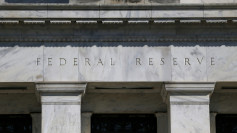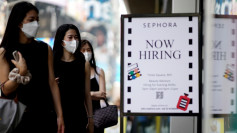The U.S. economy expanded at a slower pace in the final quarter of 2024, with gross domestic product (GDP) growing at an annualized rate of 2.3%, the Commerce Department reported Thursday. The figure fell short of economists' expectations of 2.5% growth and marked a slowdown from the third quarter's 3.1% expansion.
Despite the deceleration, the overall economic picture remained solid, bolstered by strong consumer spending and a resilient labor market. Consumer expenditures, which account for nearly two-thirds of economic activity, increased at a 4.2% annualized rate, a notable uptick from the prior quarter's 3.7%. The data suggests that Americans continued to drive growth even as inflation and higher borrowing costs posed challenges.
"The U.S. consumer has been unstoppable, supported by wealth creation, a strong labor market, and lending," said Ellen Zentner, chief economic strategist at Morgan Stanley Wealth Management.
However, business investment showed signs of weakness, raising concerns about corporate confidence in the face of economic uncertainty. Nonresidential fixed investment, a key measure of business spending on equipment, structures, and intellectual property, fell at a 2.2% annualized rate in the fourth quarter. That marked a sharp reversal from the previous quarter's 4% increase and signaled that firms may be scaling back expansion plans amid shifting economic policies under the new Trump administration.
"The one drag was businesses didn't invest in inventories as much as expected, which may be a reaction to economic uncertainty surrounding the new presidential administration," said Robert Frick, corporate economist at Navy Federal Credit Union.
The slowdown in business investment comes as President Donald Trump begins his second term with a focus on revamping economic policy. His administration has pledged to roll back environmental regulations, extend the 2017 tax cuts, and impose significant tariffs, including a proposed 25% duty on goods from Mexico and Canada. The prospect of new trade barriers could be influencing business decisions, with firms hesitant to commit capital until the policy landscape becomes clearer.
Another potential concern is how Trump's aggressive stance on immigration might affect the labor market. Employers who rely on migrant labor could face labor shortages, leading to wage pressures that may contribute to inflation.
The Federal Reserve, which has maintained a cautious approach to monetary policy, is closely monitoring these developments. While the central bank cut interest rates by a full percentage point in the final months of 2024, Fed Chair Jerome Powell signaled in a post-meeting press conference this week that additional cuts are unlikely in the near term.
A further sign of caution emerged in the personal savings rate, which fell to 4.1% in the fourth quarter, the lowest level in two years. While this indicates that consumers are willing to spend, it also raises questions about their ability to sustain spending growth in the long run.
Meanwhile, the labor market remained resilient, with initial jobless claims for the week ending Jan. 25 falling to 207,000, significantly below the forecast of 228,000. Continuing claims also declined to 1.86 million, reflecting a strong hiring environment.






